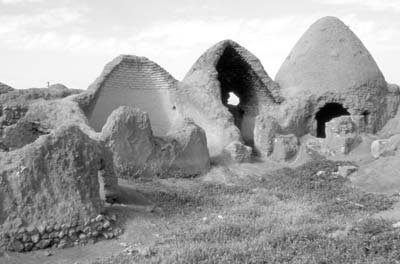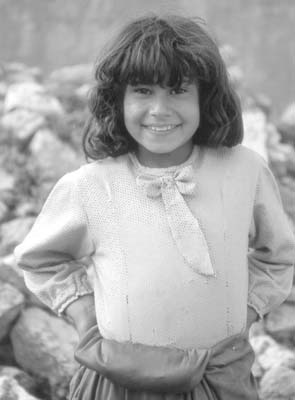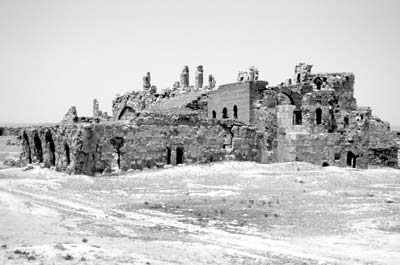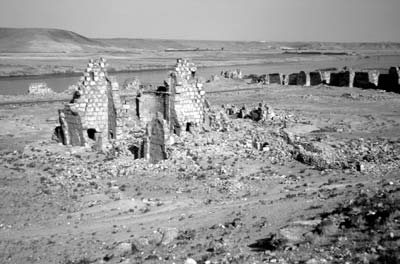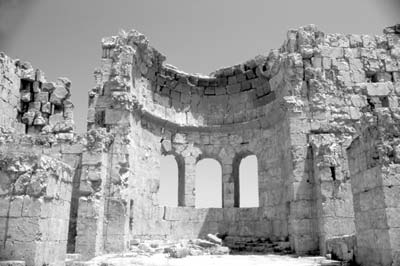Following the Euphrates
by Ed Kinney
From Aleppo, Syria, to the Iraqi border
Currently, the image of the Euphrates River is one of death and destruction as it flows slowly through the Baghdad area of Iraq. Lest we forget, hundreds of villages both in its historical past and still today have depended upon its waters as it travels from its origin in Turkey through Syria and into Iraq. As populations swell, demands on the Euphrates will only increase, leading to potential conflicts between these three countries.
Shortly before I began writing this column in 1999, my wife, Moreen, and I drove east from Aleppo on Syria’s M5 desert highway, paralleling the circuitous route of the Euphrates to the Iraqi border. Our objective was to explore ancient Roman and Greek ruins built near this river. Then, as today, few travelers visited the area due to its remoteness and, following the 1990 Gulf War, its proximity to Iraq.
Now I fear the M5 is a route that insurgents use to enter the country and on which Iraqi families flee their land. We consider ourselves fortunate to have spent two days exploring southeastern Syria, with the village of Deir ez-Zor as our base.
Shortly after leaving Aleppo on the M5, our tour group stopped to view clusters of distinctive mud-brick beehive-shaped houses. In some places there was only a single home, but usually there would be a cluster of two or three homes connected together. As money became available, a family would build another mud-brick house and then connect it to an earlier one for their expanding family or additional livestock.
The mud-brick houses each were hand-built in varying shapes and sizes, even within a family cluster. The mud bricks minimized the heat of summer and maintained warmth in winter. Though they were whitewashed, dust from livestock would create blah colors. Incongruously, several separate homes in these clusters had a single wire supplying power for TV, providing a bizarre appearance to an ancient, millennium-old design.
Following the Euphrates, we passed its al-Thawra Dam on Buhayrat (Lake) al Asad before turning south through barren lands with intermittent irrigated patches of greenery. In the distance, the rectangular ramparts of Resafa stood on a steppe surrounded by dirt and sand.
Resafa was an Assyrian military camp in the ninth century B.C. and then a caravan stop before Roman Emperor Diocletian (A.D. 284-305) established it as a fortress to guard the Euphrates.
Subsequently, time treated Resafa poorly. It was sacked by Sassanians in the seventh century, restored by Umayyad Caliph Hisham, destroyed by an Abbasid conquest and finally plundered by Mongols, leaving Resafa in ruins. There has been some minor restoration of the churches within the ramparts.
Resafa’s fame, however, is based upon the torture and beheading of Sergius, the commander of the fortress’ imperial palace guard, in about A.D. 303. Sergius was a Christian convert who refused to offer sacrifices to the Roman god Jupiter. His martyrdom founded a cult, with Sergius becoming a patron saint of Christians in the Roman army and the nearby town of Resafa becoming a center for pilgrimages, especially for Syrian Orthodox Christians.
As often is seen near historical desert sites, there was a Bedouin camp with a flock of goats near the Resafa fortress. Bedouins camp at such locations knowing there will usually be water available for livestock and that tourists may buy handmade trinkets.
During our visit, two Bedouin women wearing colorful dresses milked goats, with the goats tethered head to head. Men herd but seldom milk livestock. Afterward, these women served us a mix of hot tea and warm goat’s milk while we sat on a large rug inside their main tent. Bedouins believe hospitality is second only to honor.
Returning to the M5, our tour continued east, then crossed the Euphrates to the village of Raqqa via a new suspension bridge. There was an older stone bridge as well. The earlier-discussed al Thaura Dam now basically eliminates the Euphrates’ annual flooding of Raqqa, permitting this ancient city to slowly recover, though little remains of its historical past.
Alexander the Great’s Nicephorion and the Roman’s Callinicos have been moved to Syria’s National Museum in Damascus. After Persians fought Byzantines in Raqqa, Muslims build a new city here in A.D. 772 which further eradicated many of its historical sites, and in the 18th century Mongols razed this area. Lastly, mud bricks, the frailest of building materials, couldn’t withstand the test of time and frequent floods.
About 35 miles before reaching our Fourat Cham Palace Hotel in Dier ez-Zor, we visited the historic castle of Halabiye, called Zenobia in Palmyrene times. In about A.D. 266, Queen Zenobia founded this castle where the Euphrates narrows, permitting the castle to strategically control the river. Halabiye later became a Byzantine frontier fortress until Persia gained control of it in the seventh century A.D. Soon afterward, Arabs took command of this area and Halabiye was essentially abandoned.
Climbing the hillside just outside the castle’s ramparts offers a wonderful view both of the Euphrates below and of the ruins inside the castle. The castle was designed in a triangular plan, extending from the river upward to a massive keep, but structures within the ramparts are now basically a pile of gray stones, some of which seem to glitter, providing an eerie scene.
None of these historical fortresses along the Euphrates has truly withstood the test of time, yet they and their environs provide insight into early and current life in Syria’s eastern desert.
Minutiae
• For information re Syria, contact the Syrian Embassy (2215 Wyoming Ave. NW, Washington, D.C. 20008; 202/232-6313, www. syrianembassy.us). For tourist information, visit www.syriatourism.org.
• Based upon a recent Internet search, the Fourat Cham Palace Hotel in Deir ez-Zor remains the best. I rated it three-plus stars when we stayed there. With breakfast, current prices are $135 single and $160 double plus 11% government tax.
• We visited eastern Syria with a travel company that retired following 9-11.
• Though there is no current travel warning for Syria, readers should always be observant when visiting any of the areas discussed in this column.
In the second half of this adventure, we’ll visit historical sites near the Iraqi border before returning to explore the town of Deir ez-Zor with its Armenian Genocide Memorial.

